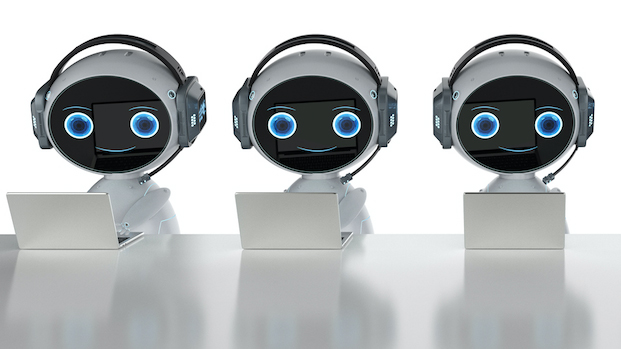September 2019

In principle, AI is software that has learned (via machine learning) to cluster data, calculate probabilities and act accordingly. This is becoming increasingly important because, as in many other business areas, marketing is not about having lots of data. It is about having the right data, recognizing patterns in these data, and making them usable for marketing. In this respect, AI seems to be a dream tool for marketers, because the technology not only simplifies processes, but also improves them.
For example, online marketing is benefiting from retargeting, as AI can read out images and recognize what is displayed on them. This helps to provide the user with suitable product suggestions. At the moment, however, AI is scoring points in the marketing world primarily through the automation of routine tasks, such as the optimization of ad placements within the framework of Programmatic Advertising. Thanks to AI, the acquisition of an ad space can be fully automated or programmed.
Intelligent automation
AI can also be used to support and optimize complex and creative marketing tasks. It can be used to automatically analyse competitors, target groups and trends. These findings can be used by marketing managers for their strategic planning. As a result, decision-making processes are enriched with important information and can help control advertising. The value contribution of a channel and the necessary interaction of the channels to optimize the conversion, i.e. the conversion of the visitor of an online shop into a buyer, can be calculated. Theoretically, the optimal distribution of media budgets to the corresponding channels can thus be calculated.
Image recognition
AI image recognition and analysis is particularly exciting for image searches. In this area as well, the technology is not yet fully mature, but has potential for marketing when it comes to making product recommendations for example. Instead of submitting offers based on past purchasing behaviour, image recognition can submit suggestions based on the appearance of the products that either look similar or are complementary.
Brand safety
The placement of a display ad of a bank for real estate financing next to news about the banking crisis is an example of an inappropriate delivery of online advertisements. Unfortunately this is not a rarity, but can be avoided by classification with the help of AI technology. AI learns not to deliver advertising material on certain pages after having been fed with the corresponding data and information. Based on this, it determines whether an environment can be qualified as safe for the brand or not.
Voice search
Even though voice search using AI applications such as Alexa, Siri or Cortana is not yet mature, it will not only provide marketers with a new sales channel, but also another platform for branding. For this reason, it is important for advertising companies to stay on the ball and develop their own Alexa skills, for example, so that they can position themselves in time for the requirements of voice search and be present on the relevant platforms.
Facial recognition
Facial recognition enables both the unique identification of a person and the screening of faces according to target groups. Both of these are exciting features for marketers. This opens up new possibilities in outdoor advertising, especially for retailers, as they can inform their regular customers about popular products or offers matching their needs. Depending on who is standing in front of the display, outdoor advertising campaigns can be displayed according to the target group.
Chatbots and conversational AI
Bot comes from the word robot, which indicates a rather brainless execution of human commands. As such, a chatbot has little to do with real "intelligence". Nevertheless, they can answer simple routine service requests in customer service or online shops, and thus efficiently perform one of the less creative parts of marketing. Chatbots can also be used sensibly for trade fairs and events. For example, they can provide simple information on events or route descriptions and thus contribute to better visitor orientation in terms of content and space. The situation is different with conversational AI. This form of AI constantly improves through the use of machine learning. Such systems can therefore be used to answer increasingly complex queries as in a completely natural conversation situation. In the future it will therefore even be possible for AI to handle such customer communication with thousands of customers at the same time.
Content creation
Even now, bots are able to write simple messages. The same applies to displaying advertisements. AI is able to generate tailor-made online advertising media, so-called Programmatic Creatives, which can change their appearance for each target group. Interpreting more complex information and putting it into context, on the other hand, is still a challenge for AI today. After all, AI always processes its tasks according to the data it was once provided. If these are not interpreted as planned by AI, the desired target groups can quickly end up seeing the wrong advertising messages, which could ruin a campaign's success.
Don't wait to get started
The examples show how AI can be used in future marketing. In any case, it is clear that self-learning programs will have a firm place in the marketing of the future. As with all innovations, the same applies here: to be successful and gain user acceptance, it is necessary to transform trends into concrete steps and prepare the organization. Companies should look at where the use of AI is feasible and sensible. Could a chatbot be a possible first step in customer service or might your own Alexa skill make sense? Above all, it is important to take a proactive approach to discovering the possibilities of artificial intelligence. Those who miss this opportunity will be passed by early adopters.
Tags
- Digital Marketing
- Digital Trends